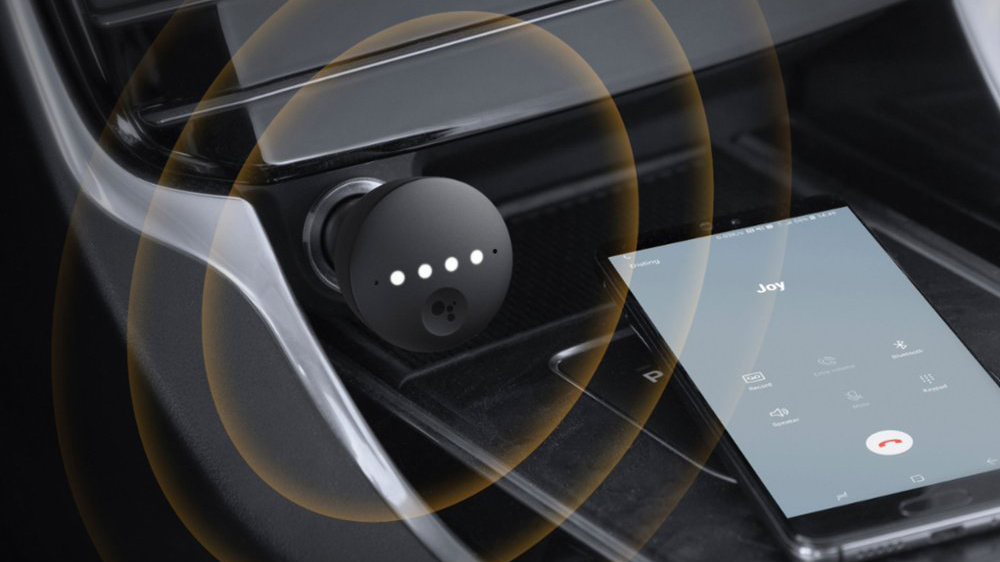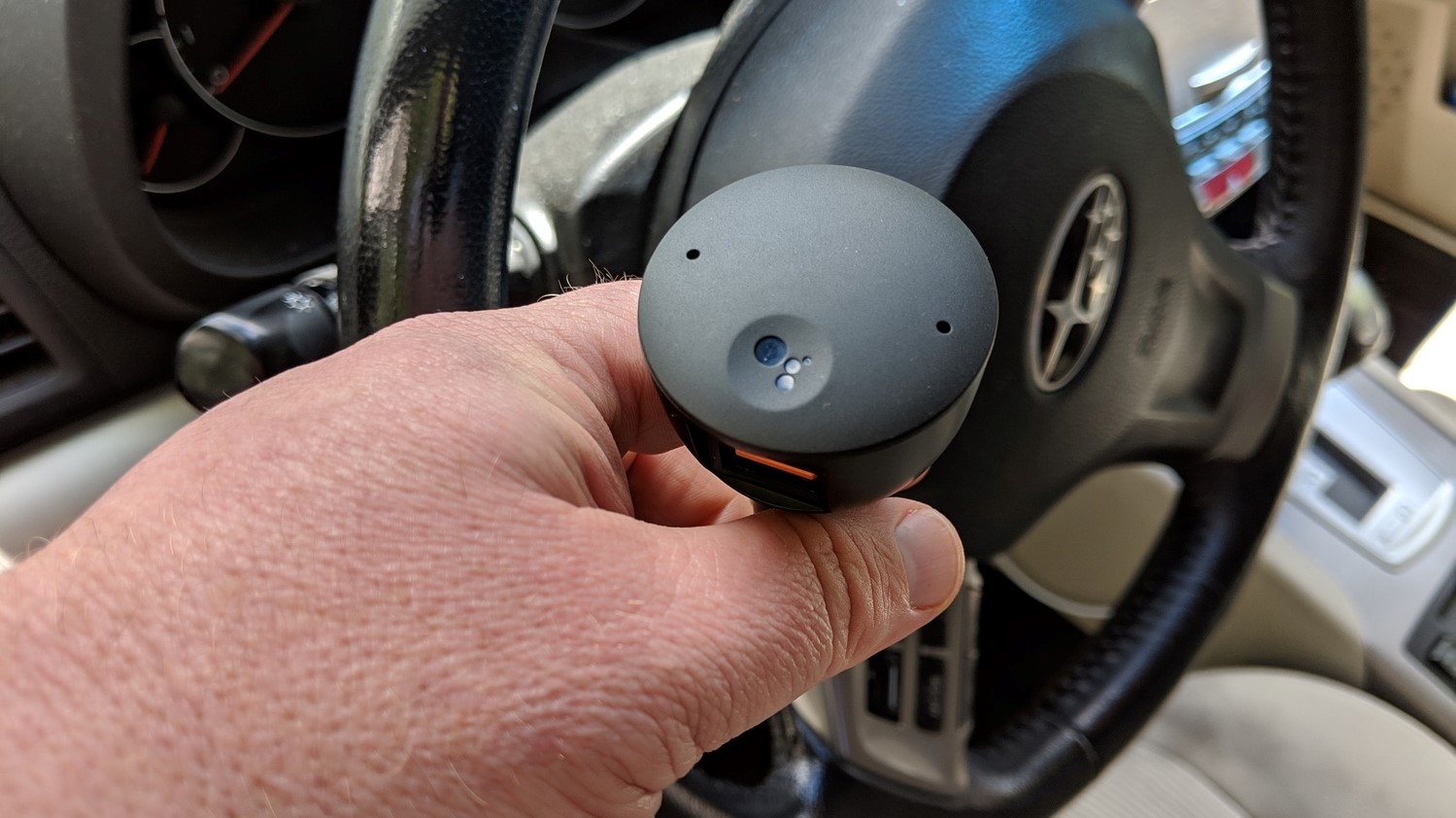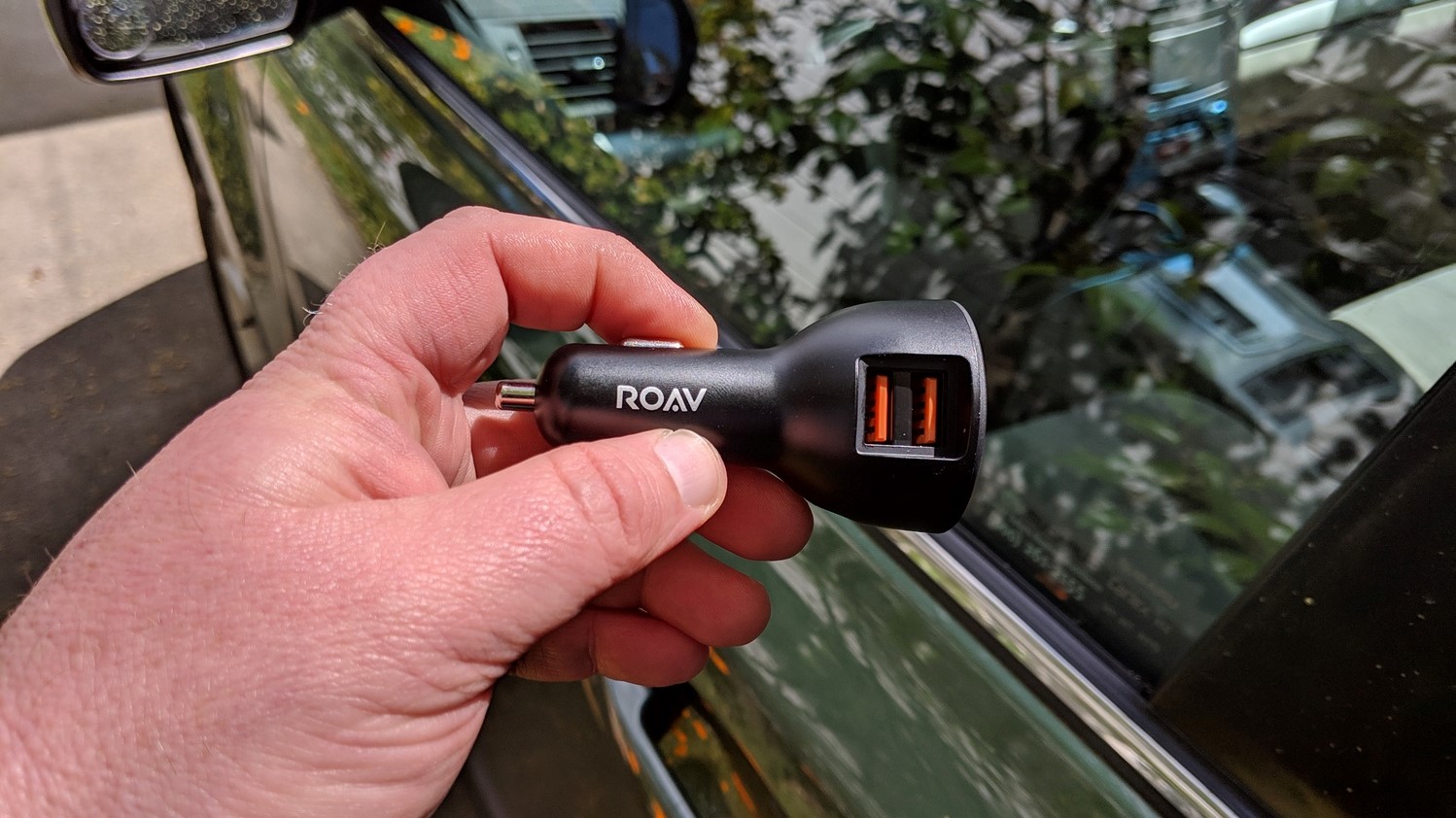Tom's Guide Verdict
The Roav Bolt is an excellent, affordable way to put smarts in an old ride. However, newer vehicles with robust Bluetooth capabilities and infotainment systems won’t benefit much from it.
Pros
- +
Inexpensive
- +
Microphones are responsive
- +
Easy setup
- +
Doubles as a car charger
Cons
- -
Not as conversational as Google Home
- -
Limited functionality with iPhones
Why you can trust Tom's Guide
I just ran a quick errand to the grocery store, with Google Assistant riding shotgun along the way.
When prompted, Google Assistant could tell me what the traffic was like between my house and the store. (A little heavier than usual, but my route was still the fastest way to get there.) I could also ask about the weather over the weekend to see if the backyard cookout I had planned was still a good idea. I had the assistant text my wife to make sure I wasn't forgetting anything at the store. And all this took place as the assistant pumped out a steady stream of tunes from the Play Music app on my Pixel 3 XL.
I don't have a car with one of those fancy Android Auto-powered infotainment systems. In fact, my 2012 vehicle predates Google Assistant’s arrival by several years. Instead, I've only got a 12v socket, which is all I need to plug in the Google Assistant-equipped Roav Bolt from Anker and add an always-listening digital helper to my ride.
As such, the Roav Bolt isn’t suitable for the latest, most technologically-advanced rides. However, it is an easy and inexpensive way for people to add Google Assistant to older cars that don't already have a splashy infotainment system installed.

Simple dongle, straightforward setup
Google first announced plans to work with companies like Anker and JBL on accessories that could add Google Assistant over your car's stereo during CES 2019. Since then, the $49.99 Roav Bolt became available from most retailers, including Best Buy and Walmart.
While there are several in-car accessories with Alexa built in — such as the Anker Roav Viva Pro, the Garmin Speak Plus, and the invite-only Amazon Echo Auto — the Roav Bolt is the first that uses Google Assistant.
The simplicity starts with installing the Roav Bolt. You plug it into a 12v socket (that's your car's cigarette lighter) and turn on your car. Ideally, you'll also hook the device into an AUX input on your car, since the Roav Bolt is optimized for that setup. But don't worry if your car lacks that kind of plug — mine does, and I could still use the Roav Bolt over a Bluetooth connection with my car. (Conversations with the Assistant are probably choppier than they would be if I was able to use an AUX input, but I still found the product quite functional.)
From there, it's just a matter of pairing your phone with the Roav Bolt and going through a one-time setup with the assistant. Setup isn’t difficult, though it is a bit of a strange process, because you’ll have to connect your phone to both your vehicle and the Roav Bolt simultaneously. Still, it didn’t take more than a minute or two before I was up and running.

Like a Google Home for your car — almost
From then on, interacting with Google Assistant through your car's stereo is as simple as saying "OK Google."
You might wonder why someone would use the Roav Bolt via Bluetooth in the first place, considering that if your car already has Bluetooth capabilities, you’d probably be well off just connecting your phone to it directly.
The benefit with the Roav Bolt is that you get built-in microphones aided by noise-canceling technology that are designed to pick up your voice, even when you've got music blaring, passengers yammering and traffic noise trying to drown you out. I drove around with my windows down, trying to get the Google Assistant's attention, and 95 percent of the time, it heard me perfectly.
In that sense, you could almost regard the Roav Bolt like a Google Home for your car. However, while using Anker’s device to talk to Google Assistant isn't all that different from using your phone, the experience is less conversational.
Nearly every question or command needs to be preceded by "OK, Google," even when you're asking follow-up questions. For example, after I asked the assistant to tell me the latest scores for the UEFA Champions League, I had to say "OK, Google" before I could ask when the next matches were coming up.
Still, you can ask the Google Assistant on the Roav Bolt the same sort of things you'd ask any Google-powered device. You can control music and podcast playback, send texts and make phone calls or just ask general questions that plumb the depths of Google's knowledge graph.
I found the device particularly handy when asking directions: the assistant would tell me the fastest route over my car's stereo, while my Pixel, held by a mount attached to the car's dashboard, launched Maps to give me visual directions. I could even ask the Assistant to find gas stations along the route or text contacts with my ETA.
The Google Assistant can also play games like Movie Trivia, Mad Libs and more — a feature I suspect might come in handy for families on lengthy car trips. (One heads up about that movie trivia game, which has you identify audio clips from famous movies: any words in the movie dialogue that would earn more than a PG rating get bleeped, but those bleeps come in loud and clear. I'd avoid that game if you have really young kids.) Because the mics on the Roav Bolt can pick up more than one voice, you can play along with passengers, too.
Because the Roav Bolt comes from Anker, which specializes in power accessories, you also get a way to keep your mobile devices charged. The Roav Bolt includes a pair of USB charging ports for plugging in your phone as you drive.
Not for everyone
Anker says the Roav Bolt is optimized for Android devices, though it is available for the iPhones in a beta experience with limited capabilities.
The reason for this is that Google Assistant isn’t embedded into the iOS system — it functions as a separate app. As a result, the Google Assistant app needs to be running on your iPhone, even if just in the background, for the Roav Bolt to respond to commands. Additionally, the Assistant can’t launch media apps on iOS, so you can’t use to Roav Bolt to ask it to play your favorite Spotify radio station, for example.
Bottom line
The Roav Bolt is certainly better suited for Android users than those with iPhones. It’s also nice-to-have but not especially necessary if you drive a car that already has Bluetooth media capabilities, because you could always just connect your handset to your vehicle directly. The noise-cancelling microphones might help with Assistant commands and in phone calls, but then again your car may already have microphones of its own built in, too.
So who is the Roav Bolt for, then? If you happen to drive a vehicle that is old enough to have an AUX port, yet not new enough to route media through Bluetooth, the Roav Bolt works well as a Bluetooth-to-AUX adapter for Android and iPhone alike. For $50, it puts voice commands well within your reach even if your car didn’t roll off the assembly line with them. The Roav Bolt is also a great accessory if your phone doesn’t always hear you clearly enough in your car’s noisy cabin.
However, if your car was built within the last eight years or so, and especially if you’re rocking one of Apple’s devices rather than a phone with Google Assistant built in, chances are the Roav Bolt won’t do much that your car can’t already.
For more Google Assistant-related tips, tricks, and how-tos, check out our complete guide to Google Assistant.
Philip Michaels is a Managing Editor at Tom's Guide. He's been covering personal technology since 1999 and was in the building when Steve Jobs showed off the iPhone for the first time. He's been evaluating smartphones since that first iPhone debuted in 2007, and he's been following phone carriers and smartphone plans since 2015. He has strong opinions about Apple, the Oakland Athletics, old movies and proper butchery techniques. Follow him at @PhilipMichaels.


